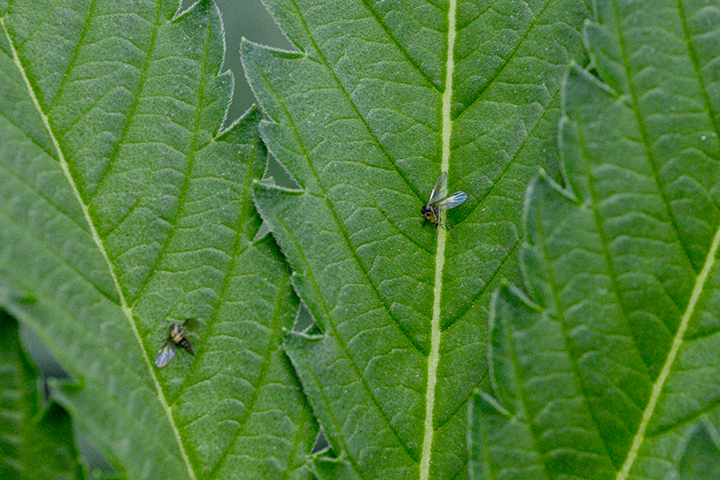
Protect Your Marijuana From Fungus Gnats
What are Fungus Gnats?
Fungus gnats are tiny (adults are sized at 2 millimeters) pests that consume fungus near the soil. When they run out of fungus, they start to eat the hairs and other parts of your marijuana plant’s roots.
This can have serious effects on your plant’s growth, and could lead to changing colors, and higher vulnerability to fungal diseases. They are brown, black or gray, and both males and females both have long legs.
Females lay up to two hundred eggs every week. These eggs are found on the lower half of your marijuana plants.
Larvae, or maggots, have clear bodies and black heads, but are impossible to see because they are too small. Maggots and adult fungus gnats are equally harmful to your marijuana plants.
In addition to eating plant roots, the fecal matter they leave behind is also harmful. The gnat poop causes the soil to hold too much moisture. This, of course, can lead to increased problems with other pests and mold.
Fungus gnats are attracted to plants when the soil is overwatered and covered with decaying organic matter.
You won’t see the fungal growth because it is too small for human eye detection. But the fungus gnats can see it, and when they do, they will want to feast, and lay eggs on your marijuana plants.
This article covers:
How to detect fungus gnats on your marijuana plants?
How to keep fungus gnats away?
How to get rid of fungus gnats?
Why is it so important to properly maintain your compost pile?
How do you detect fungus gnats on your marijuana plants?
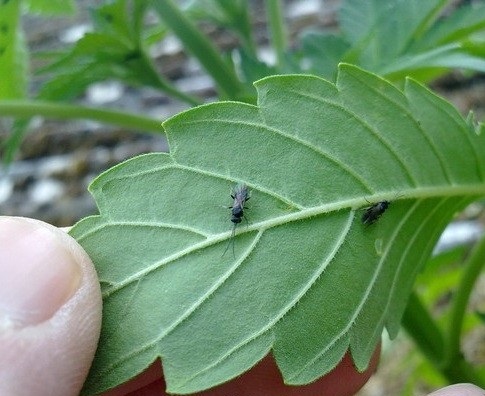
First, distinguish fungus gnats from fruit flies. Eradicating those two pests calls for completely different approaches. Keep in mind that:
- Fungus gnats are dark brown, gray, or black.
- Fruit flies are brown, yellow, or orange.
- Fungus gnats are smaller than fruit flies.
As soon as you suspect having fungus gnats, you should confirm that is indeed the problem. One of the best ways to check is with yellow sticky cards (available at any garden center). Make sure the cards are yellow since gnats go for that particular color.
Place a couple in the soil next to your marijuana plants, and then leave them for several days. Observe and if, after a couple of days, they are covered in gnats, you know that you have a problem.
A second, faster way to detect fungus gnats is to cut a potato down to half an inch. Then, stick that cutting into the ground. If it is infested with maggots after 4-8 hours, then you know it has become a problem that needs to be managed.
Download my free marijuana grow guide and learn more about fungus gnats
Your plants could die from a fungus gnat infestation, especially if it’s a particularly bad infestation or if your plants are quite young. Before they die, however, you will first notice slower growth, leaf discoloration and maybe even symptoms of nutrient deficiencies (that are without apparent cause).
If the infestation has particularly the terrible timing and appears right when your plants have begun to flower, the end harvest could be hugely and negatively affected. Sometimes root rot can come as a result of the adult fungus gnats’ feet touching your plant’s roots, which has its own set of devastating effects.
How do you keep fungus gnats away?
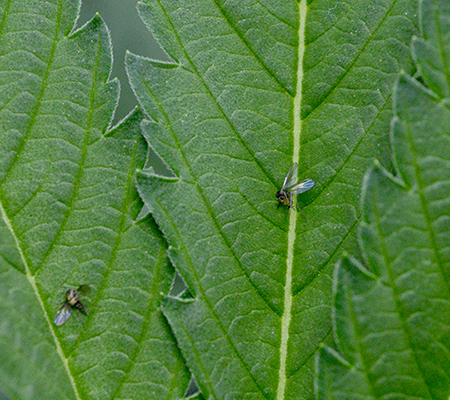
The best way to keep your crop healthy is to prevent fungus gnats from getting to your marijuana plants in the first place. The easiest way to do that is to avoid overwatering your marijuana plants.
If this isn’t your first time growing marijuana at this grow site, and you had a fungus gnat problem during your last season of growth, you need to be absolutely certain that the area is completely cleaned.
You should also thoroughly check all clones from other marijuana plants for fungus gnats or other such pests. Unintended transfer is a fairly common, and avoidable, occurrence.
How do you get rid of fungus gnats?
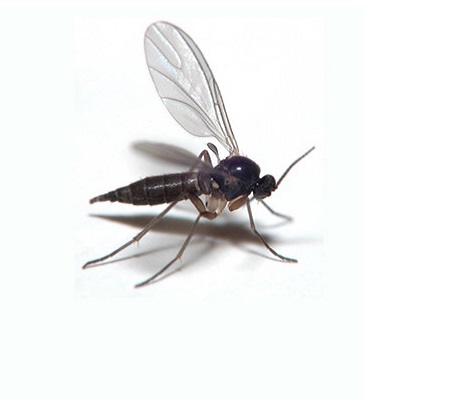
You need to get rid of an infestation as soon as it starts, even if negative signs haven't yet shown. While trapping the adults by using the yellow sticky cards is a fairly easy way to remove them, the larvae are not so easy to deal with. The first thing you should do is:
- Allow the top few layers of soil to dry out completely. This requires a break of a few days in your normal watering schedule, but don’t worry -- it should have no lasting negative effects on your plants.
- After that, use a solution of one part 3% hydrogen peroxide, and four parts water to “water” your plants. This will keep the gnats away, and have a healing effect on your plants, as the solution turns into oxygen and water.
- To get rid of the pests as soon as possible, use a fan to speed up the drying process and prevent the fungus gnats from being able to fly around and lay eggs normally.
- Use food-grade diatomaceous earth over the exposed parts of soil. It will kill the larvae and simultaneously prevent future infestations. Because it is an organic product, its destructive nature towards insects has no negative effects on people or animals.
- “BT” or “BTi,” which stands for Bacillus Thuringiensis, is a bacteria contained in pest treatments that effectively kills the fungus gnat larvae. It prevents the larvae from eating and, therefore, kills them off effectively. This also will have no harmful side effects to you or your plants. Simply pulverize the store-bought pellets, and sprinkle it on the soil. Be sure to buy the dry (not liquid) version. After treatment, water your plants generously.
Once you’ve killed the fungus gnats and their offspring, don’t go back to the way you were doing things before. Clearly you had been overwatering your plants somehow, so be sure to adjust your watering schedule accordingly from now on. More about fungus gnats in my free grow bible.
Why is it so important to properly maintain your compost pile?
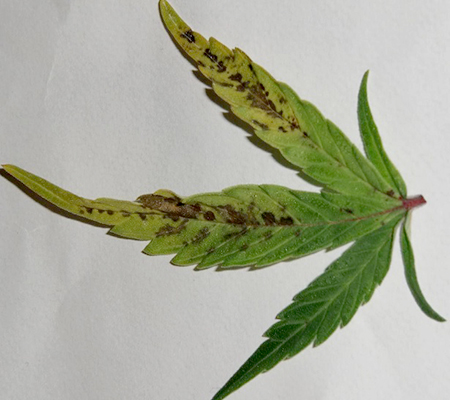
Compost piles are good and healthy for your plants, but fungus gnats and their offspring often find happy homes in it, too.
Pay attention to the state your compost pile before you feed it to your plants. To prevent your compost pile from attracting pests, make sure that it does not retain excess moisture. It should never seem wet, but rather should have the texture of a squeezed-out sponge.
If the fungus gnats are already in your compost pile, sprinkle the diatomaceous earth or other treatments mentioned above onto the parts exposed.
After treating your compost pile, you should add water to activate the product, and exterminate the fungus gnats and larvae.
Once the compost pile is dry again, cover it with a tarp or other plastic cover. Turn it over frequently, and always allow enough time for thorough drying.
Thanks for reading. Please leave comments or questions below and don’t forget to download my free grow bible.